October 15th, 2024
11minute read
Heavy artillery has been a been a battlefield-dominating weapon since World War I.
Even today, the big guns continue to do their deadly work in the ongoing war in Ukraine.
One of these is the Krupp K5 280mm railway gun from World War II.
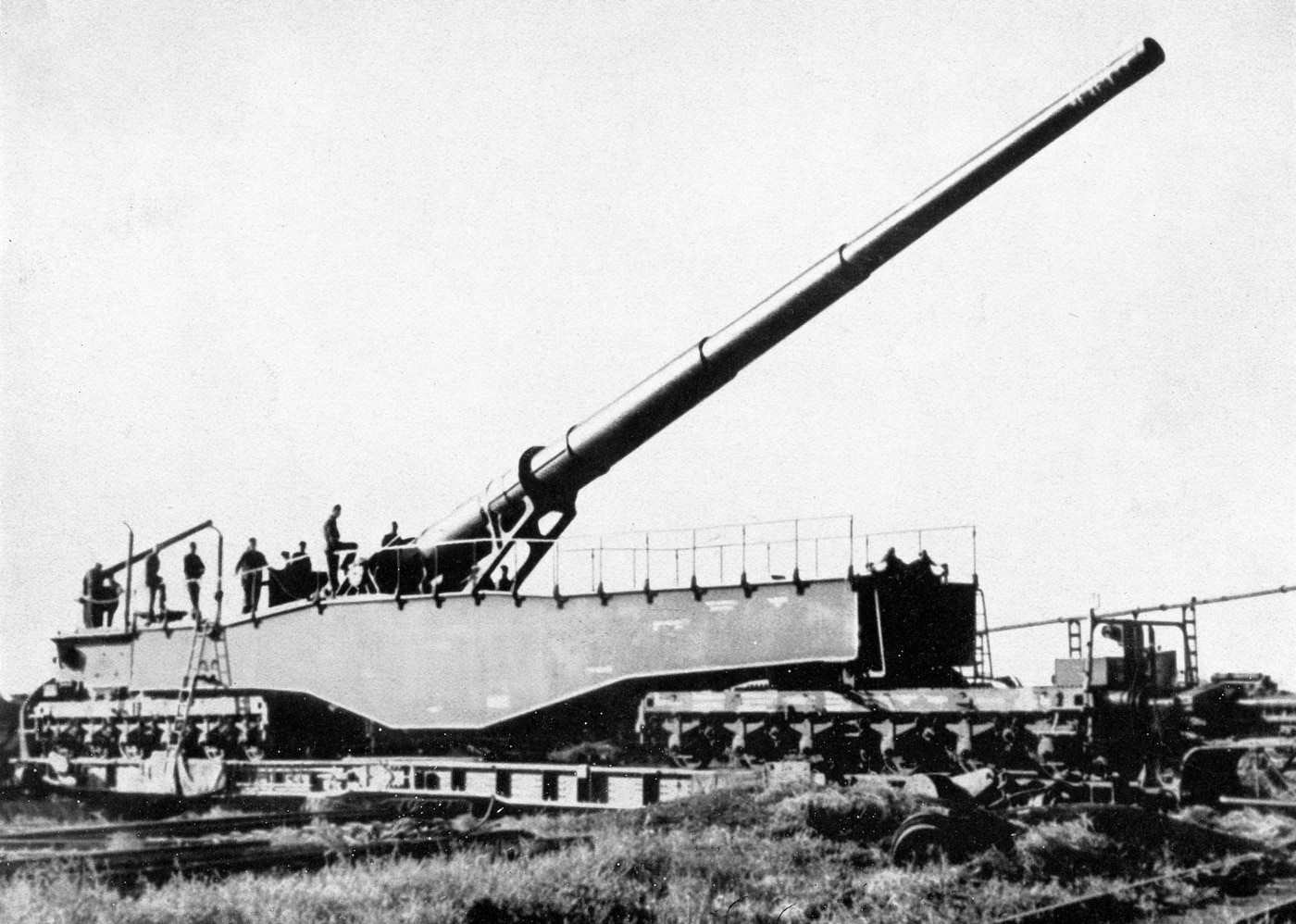
Dubbed Anzio Annie by U.S. troops in Italy, the Krupp K5 railway gun fired 28cm shells that weighed 550 lbs. This one was nicknamed “Leopold” by the German soldiers. Image: NARA
To improve the railway guns flexibility in acquiring targets, the Vogele Turntable was created.
This allowed the K5 to fire from a raised rail, with 360 degree traverse on circular track.
The following description comes from a March 1945 U.S.
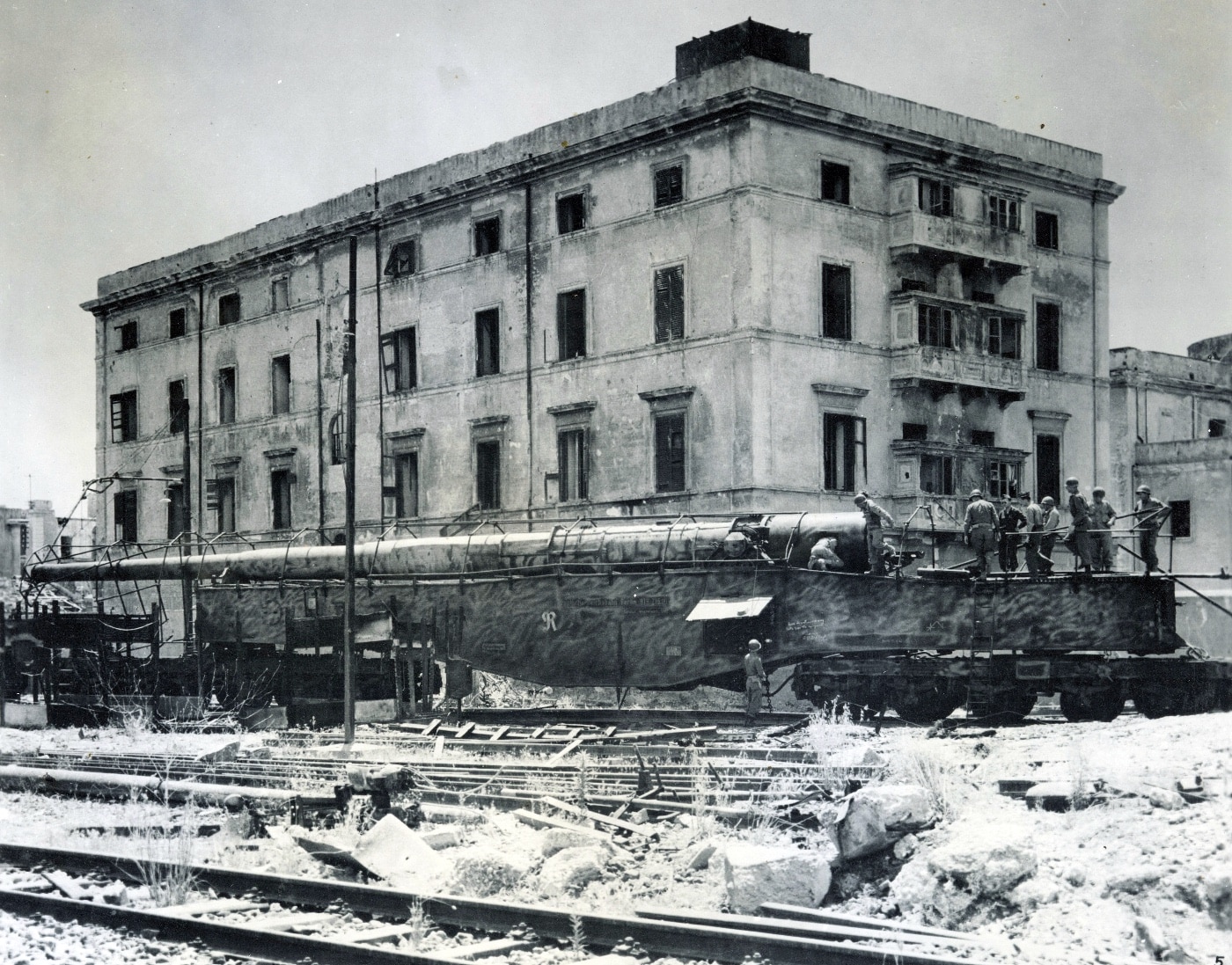
Allied troops examine a captured Krupp K5 railroad gun. This gun, named Robert, had a wave camouflage pattern. Image: NARA
It is fired from a turntable affording a 360 traverse.
The gun has a 70-foot 8-inch barrel held in a sleeve-bang out cradle.
The equipment in effect has a double recoil action.
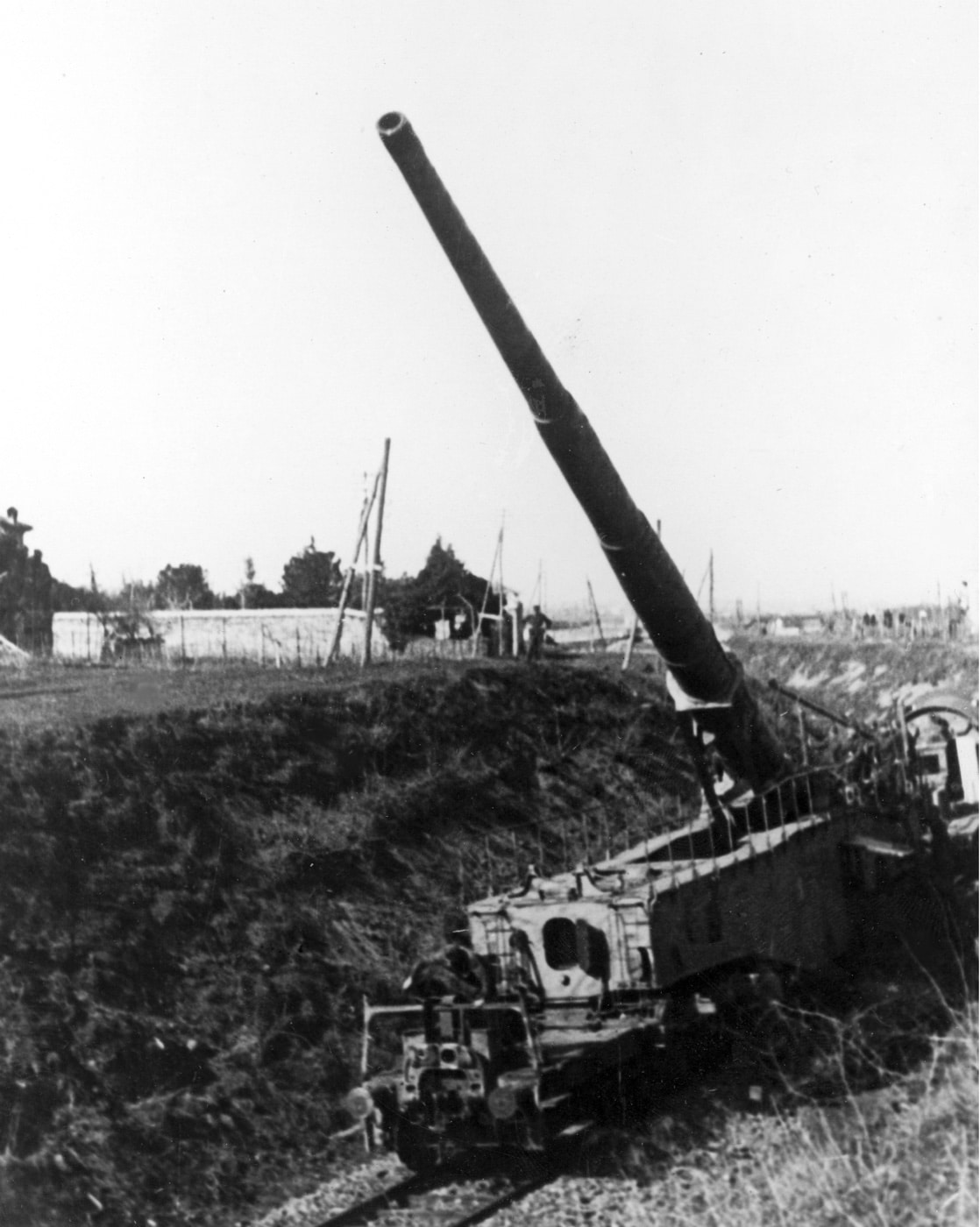
Shown here is one of the two Krupp K5 guns at Anzio. It’s barrel is elevated into a firing position. Image: National Archives Poland
Besides the barrel recoil which is approximately 32 inches, the gun car recoils.
The powder chamber is approximately 10 feet 5 inches long.
Firing is of the percussion key in.
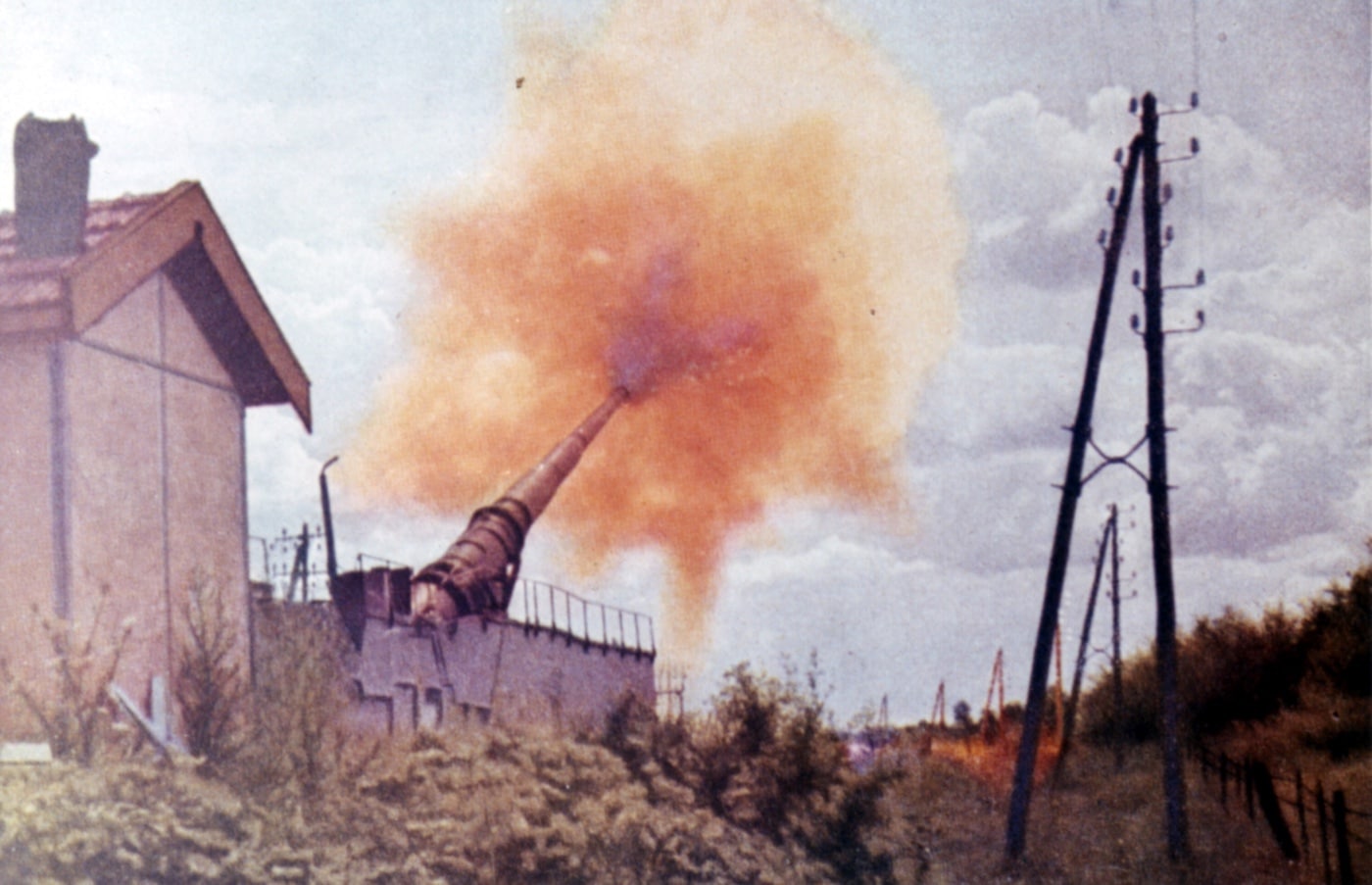
A colorized view of the massive blast from the firing of a German Krupp K5 gun. Image: U.S. Army Ordnance Museum
Weight of the projectile is approximately 550 pounds.
It has longitudinal inclined steel splines and a single one-inch-wide copper band that acts as a gas seal.
In loading the projectile, the splines are lined up with the rfling of the gun tube.
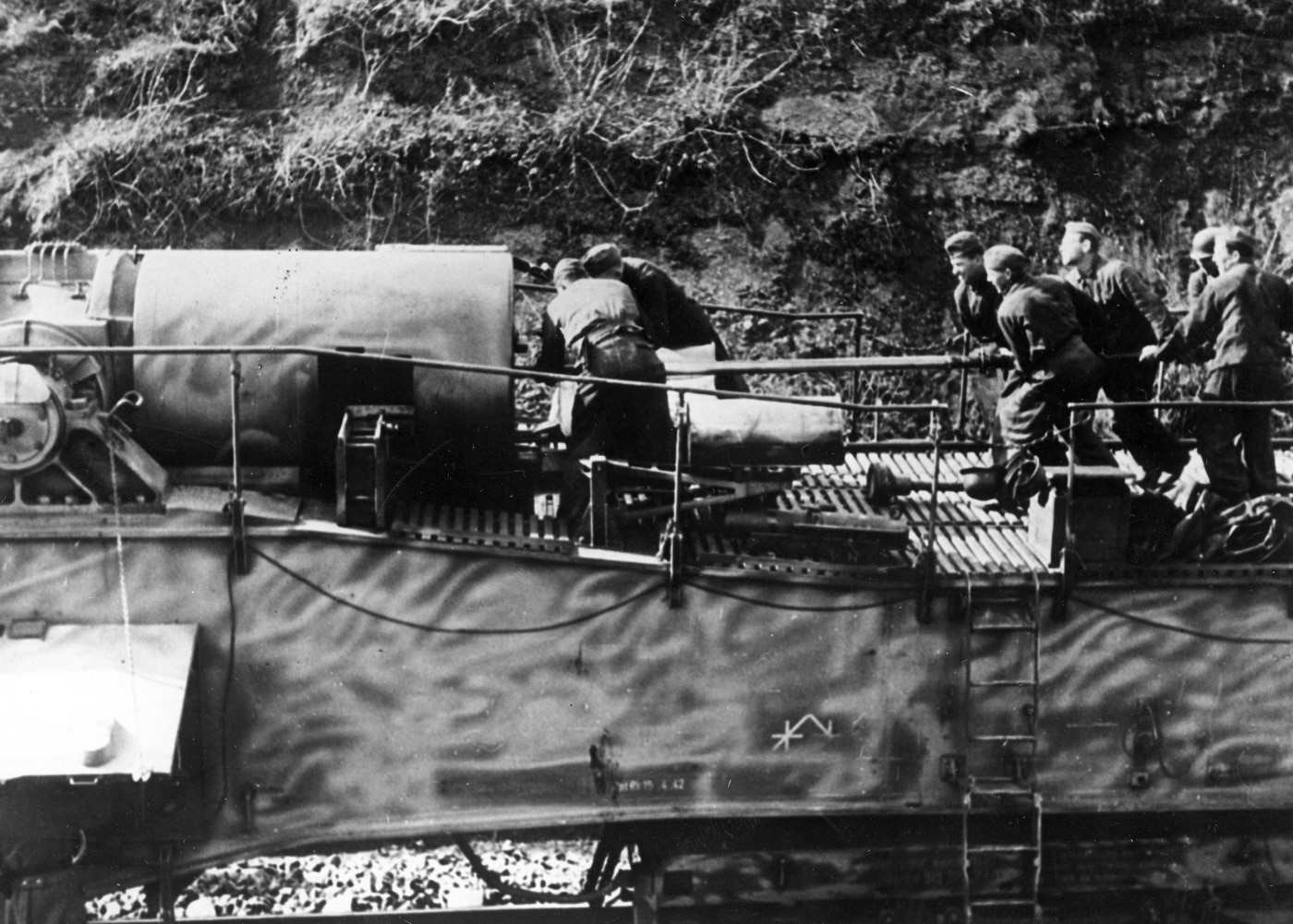
German soldiers load a Krupp K5 railway gun during the Battle of Anzio. Each projectile weighted nearly 550 pounds. Image: National Archives Poland
The shell is 33 inches in length, exclusive of the windshield.
Fragments indicate that the windshield would add an extra two feet to the length.
They are: 28 cm Br.
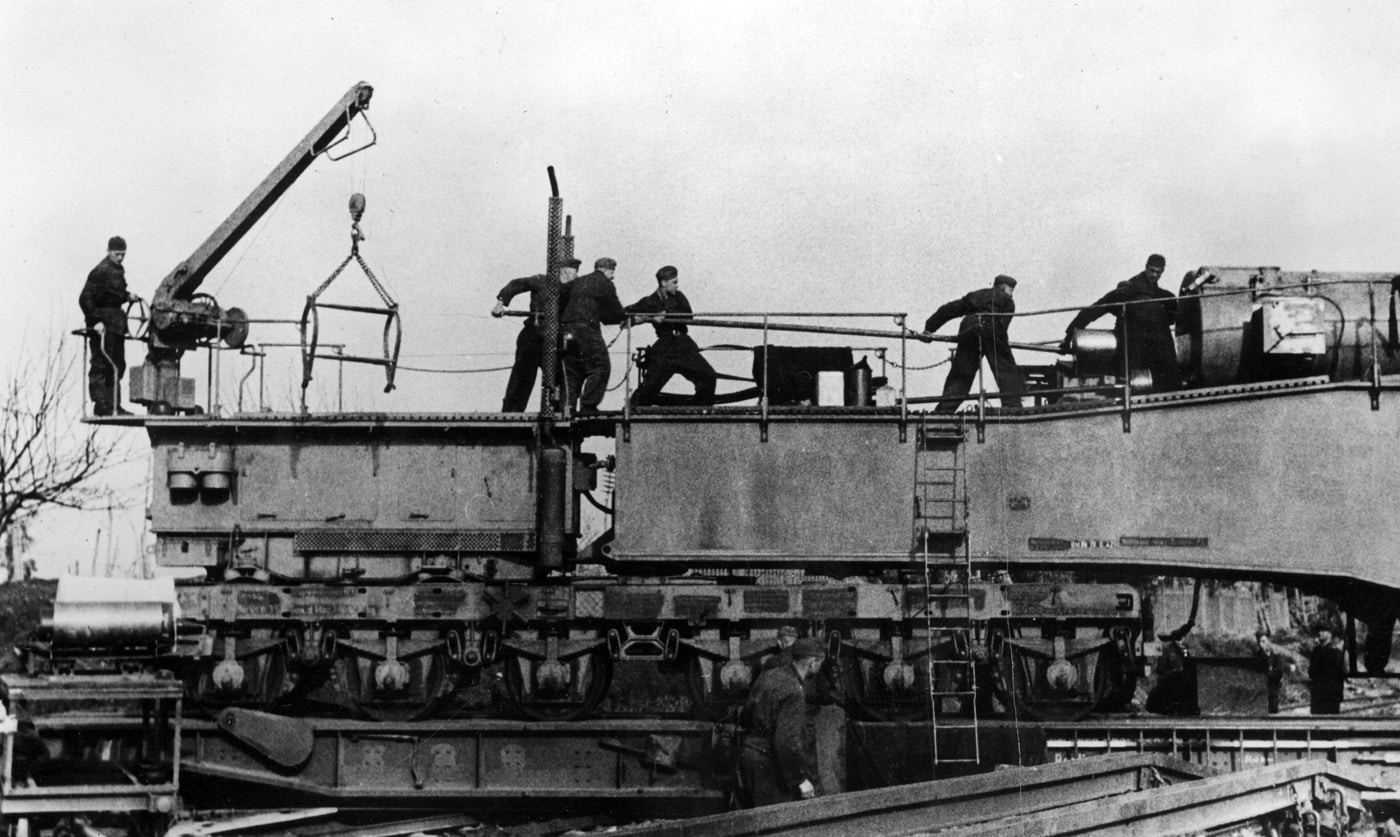
There was plenty of work to do to serve the K5 guns, and each gun had a 42-man crew. Theoretically, its rate of fire was 15 rounds per hour, but this was unlikely in combat. Image: National Archives Poland
German Railroad Guns Gain Infamy in Italy
The Anzio landings caught the Germans by surprise.
This gave the Germans valuable time to assemble their forces to contain the invasion.
Heavy artillery was an important part of this force.
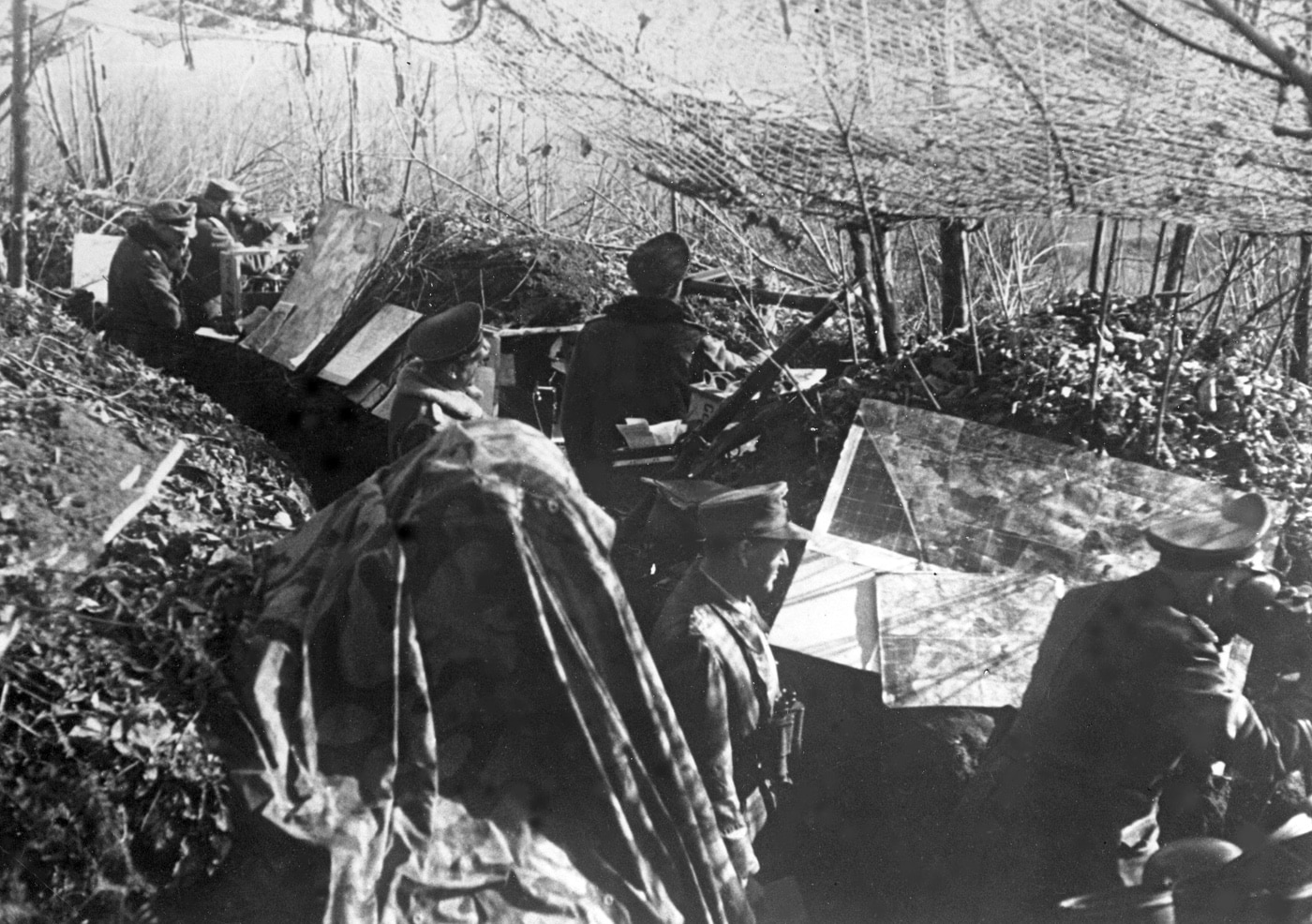
At Anzio, the Germans had the entire Allied landing zone mapped out. This photo shows German artillery officers directing fire from an observation post above the beachhead. Image: National Archives Poland
The harbor of Nettuno and the airport east of it were shelled by 17 cm cannons and railway guns.
Five Spitfires were destroyed, and the field had to be abandoned as a permanent base.
Thereafter planes used the field only during the day, returning each night to bases near Naples.
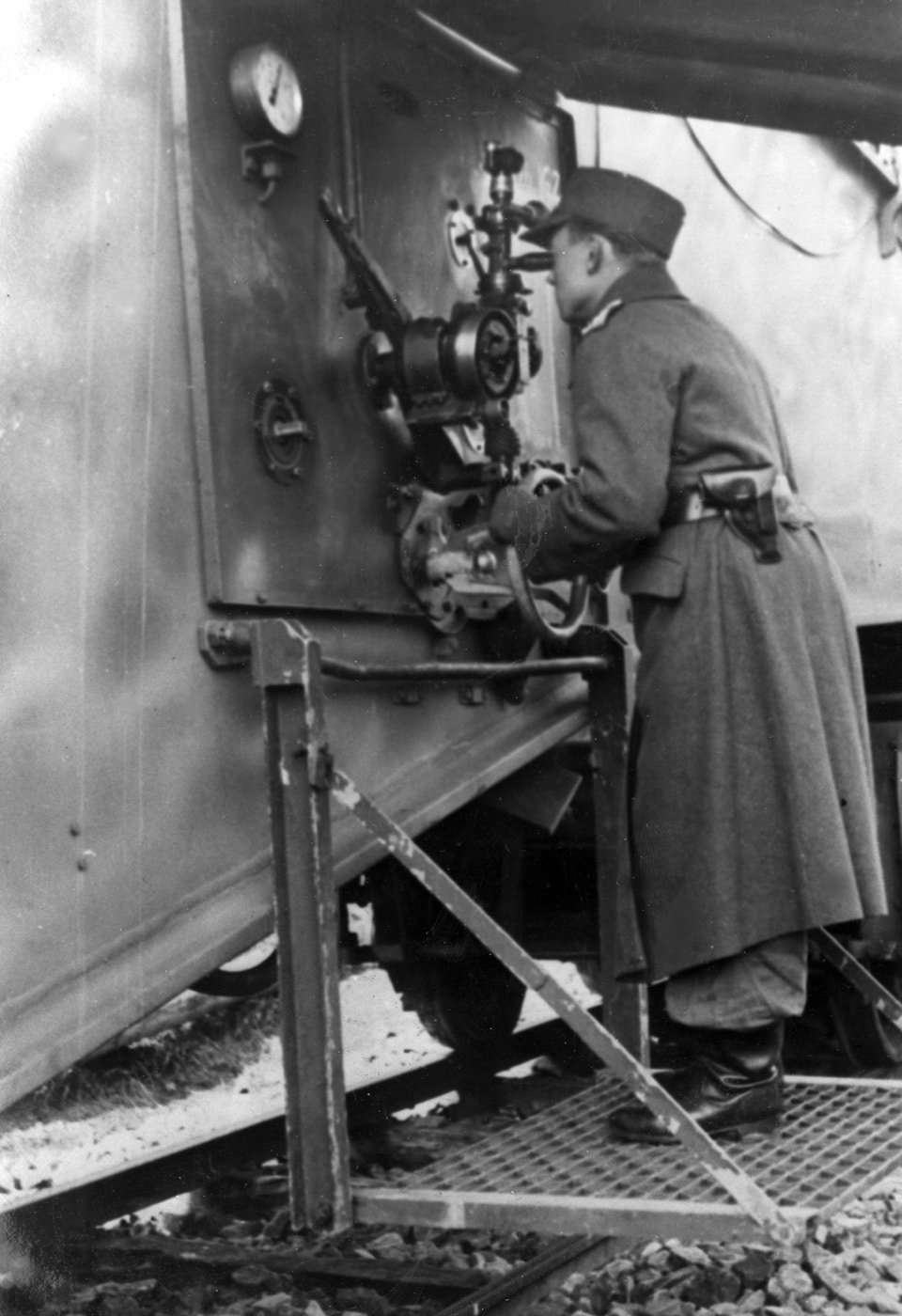
A Krupp K5 gunner aims the 28cm gun at Anzio. Note the large wheel for controlling movement. Image: National Archives Poland
The most serious effect was in delaying the work of unloading supplies in the port.
The effect of the massive 28 cm shells went far beyond the material damage they caused.
Their effect on the morale of the soldiers stuck in the Anzio pocket was significant.
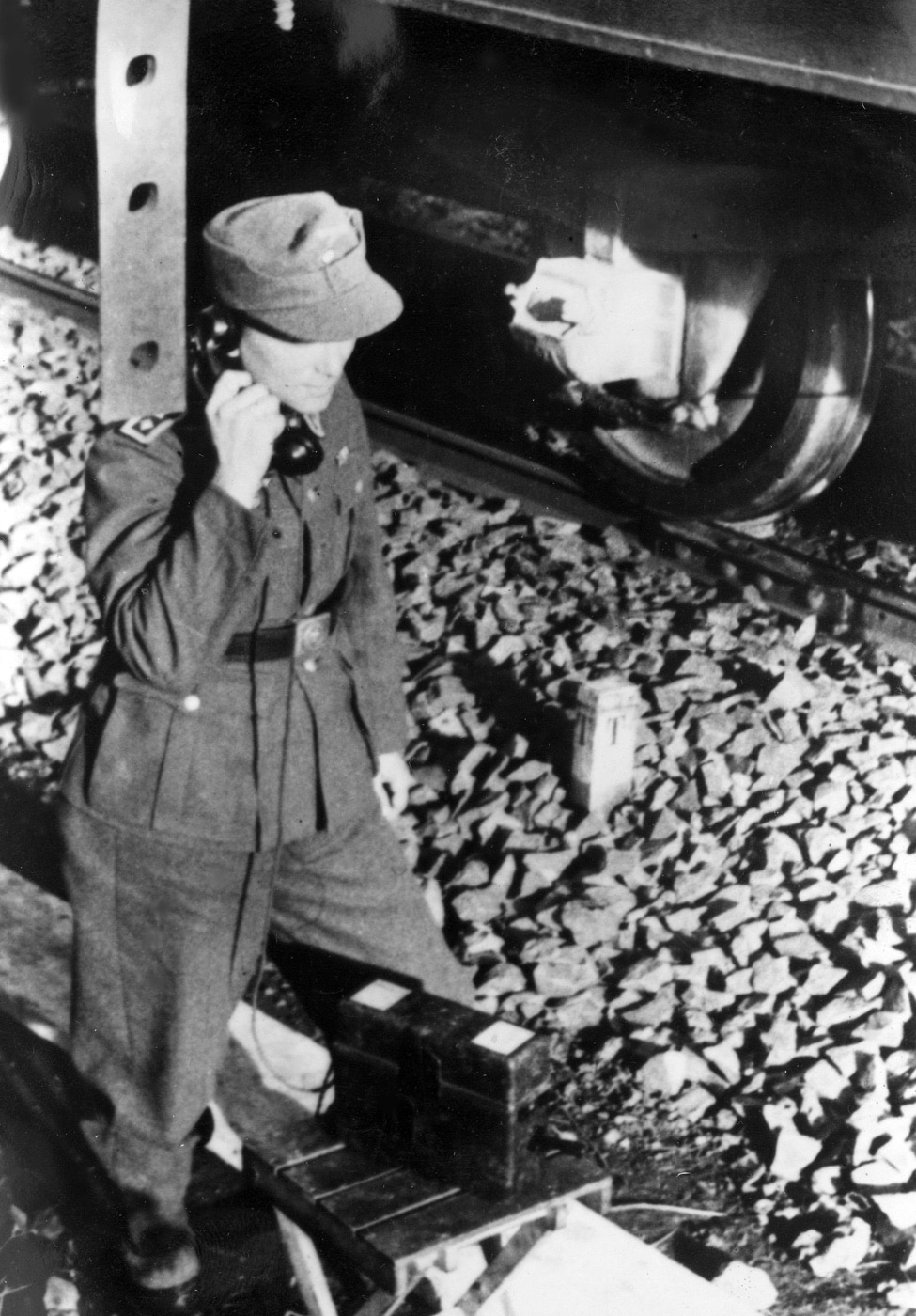
A German Krupp K5 gunner’s assistant receives a range correction from spotters by telephone. Image: National Archives Poland
They told how one shell split through three floors of a thick, stone building beside the harbor.
A fourth ploughed into the Anzio cemetery unburying the dead.
The next day railroad guns west of Albano were bombed.
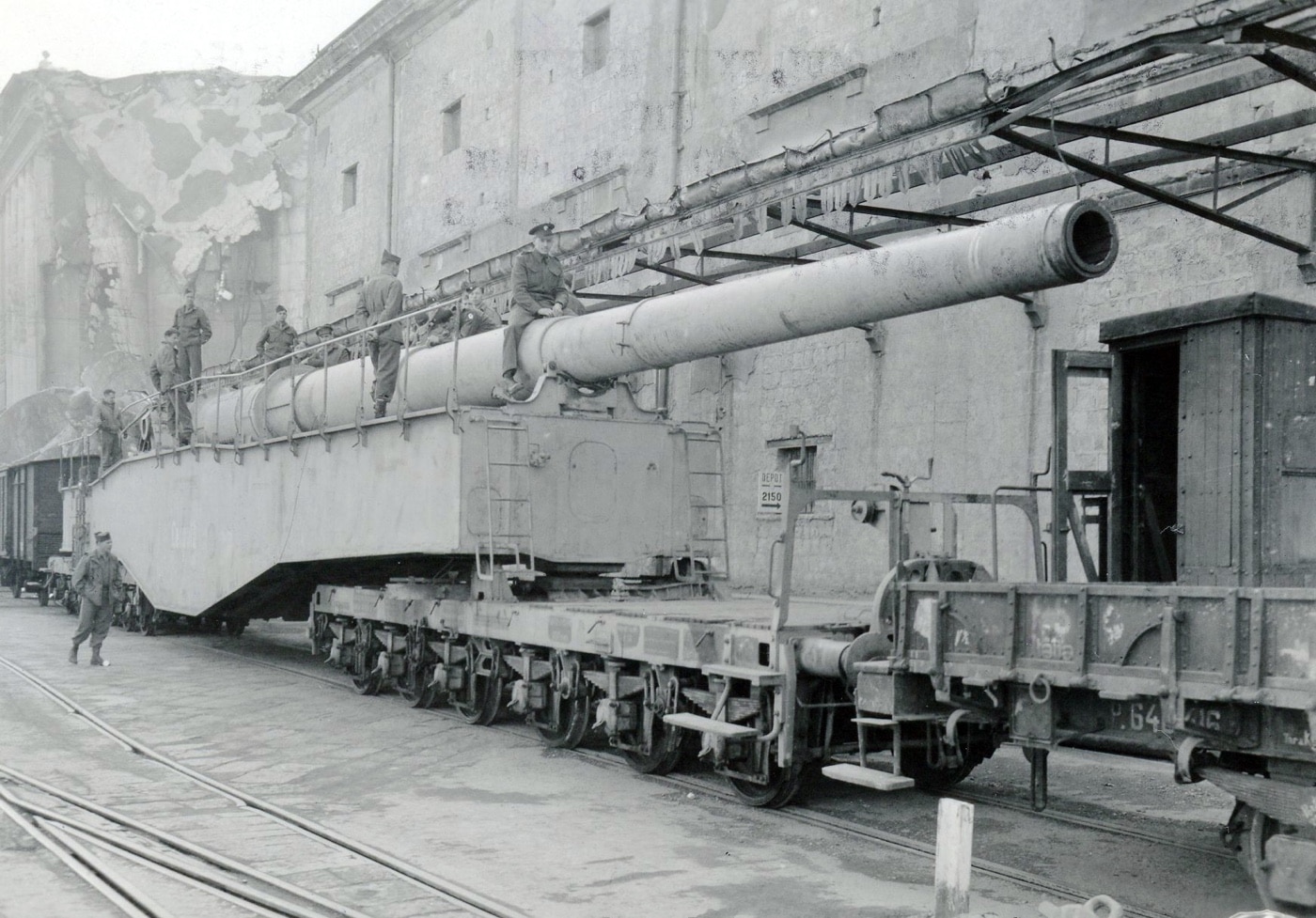
This is Leopold, one of the German Krupp K5 guns used in the Battle of Anzio. After it was captured, it was transported to the United States. Image: NARA
The dummy guns used telephone poles for barrels and their camouflage was purposefully never quite good enough.
The regular arrival of the K5 shells gave rise to the first G.I.
nickname: the Anzio Express.

The Krupp K5 nicknamed Robert was captured at Civitavecchia on June 9, 1944. It had a frame surrounding the gun that was used to provide camouflage. Image: NARA
In 30 minutes, they could get off up to eight rounds and then vanish into the tunnel.
It took between four to seven minutes to reload and fire the gun.
By early March 1944, the guns had managed to fire more than 300 rounds into the Allied beachhead.
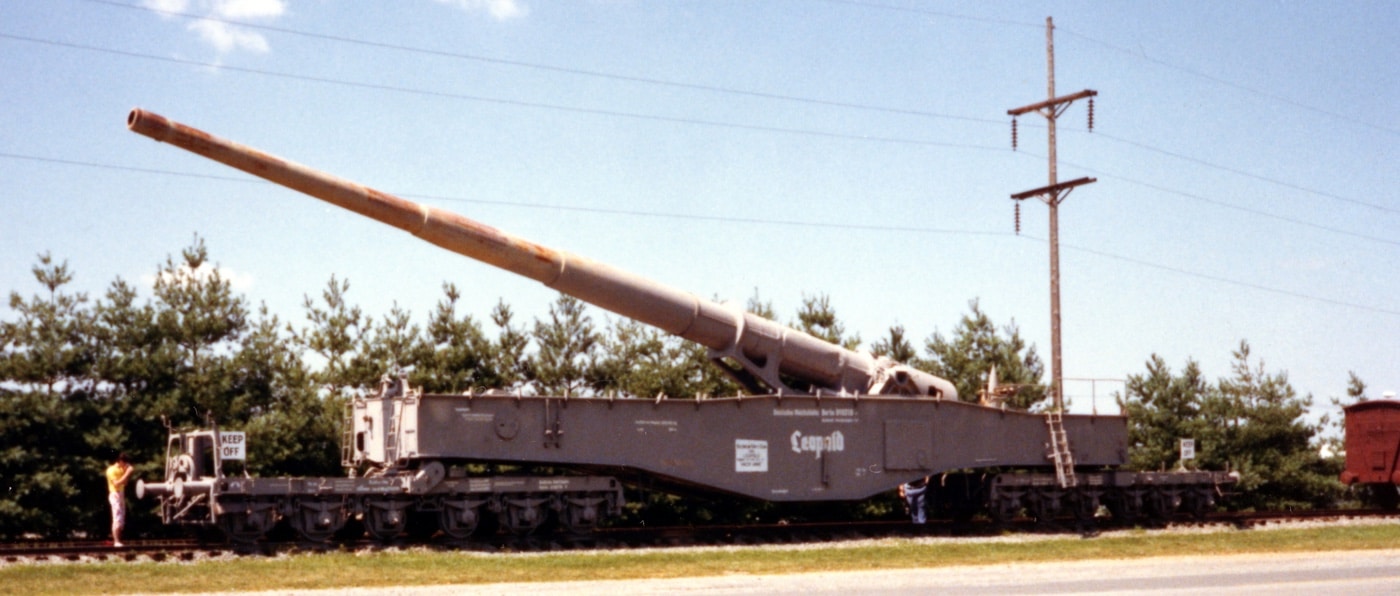
Leopold seen at the old U.S. Army Ordnance Museum in Aberdeen, Maryland during July 1987. Image: Author’s photo
Leopold and Robert, or Annie and the Express, had not been found or silenced.
Ammunition was not only running out, what little was left couldnt get through.
Even so, the guns were not located until May 28th.
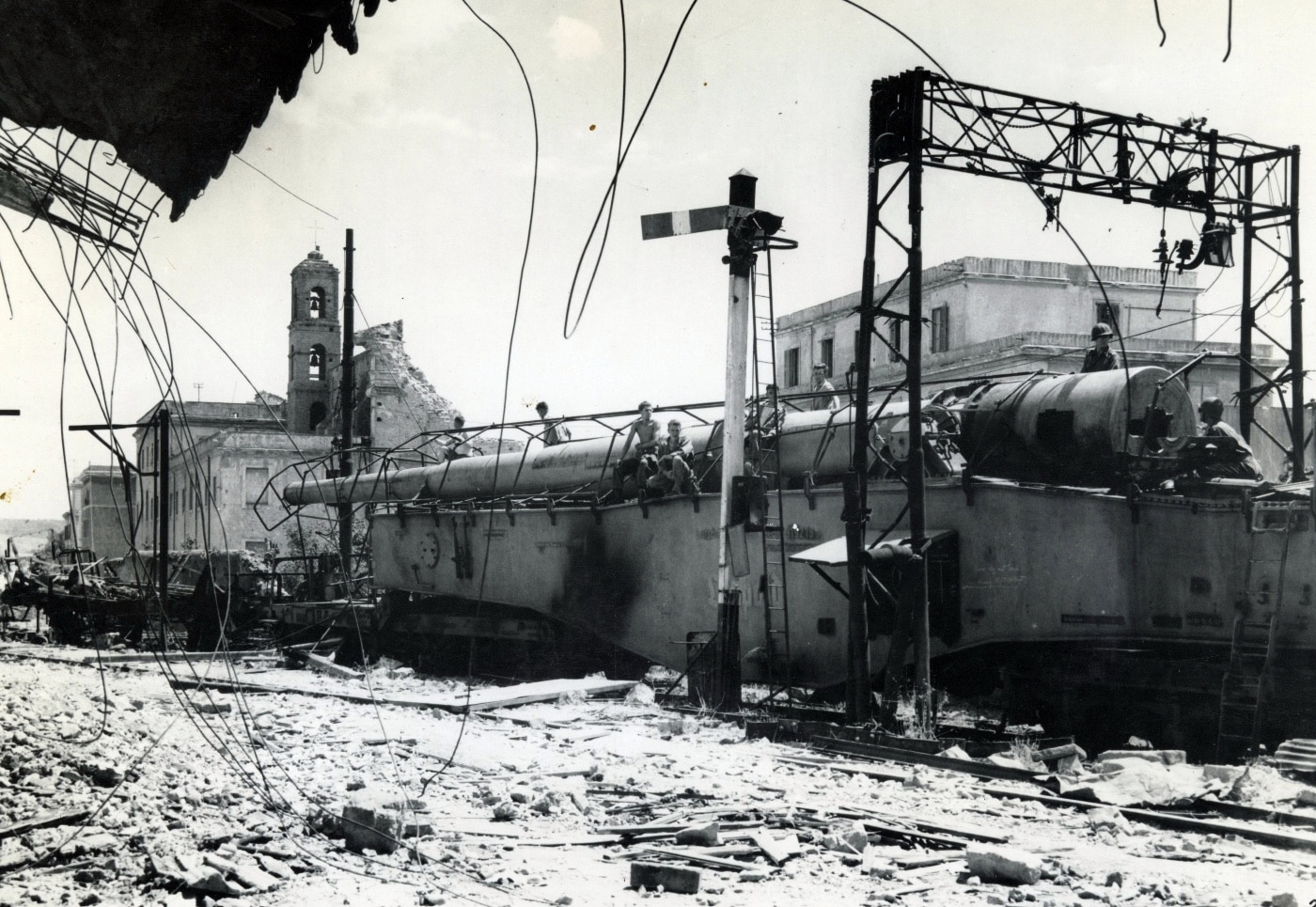
The German Krupp K5 named Leopold seen after capture in a badly bombed rail yard. Image: NARA
That evening, Annie and the Express fired off their remaining 16 rounds, and escaped in the darkness.
But it was too late, and the Allies were advancing too fast.
During the Battle of the Bulge, the K5 guns threw nearly 400 rounds at American positions.
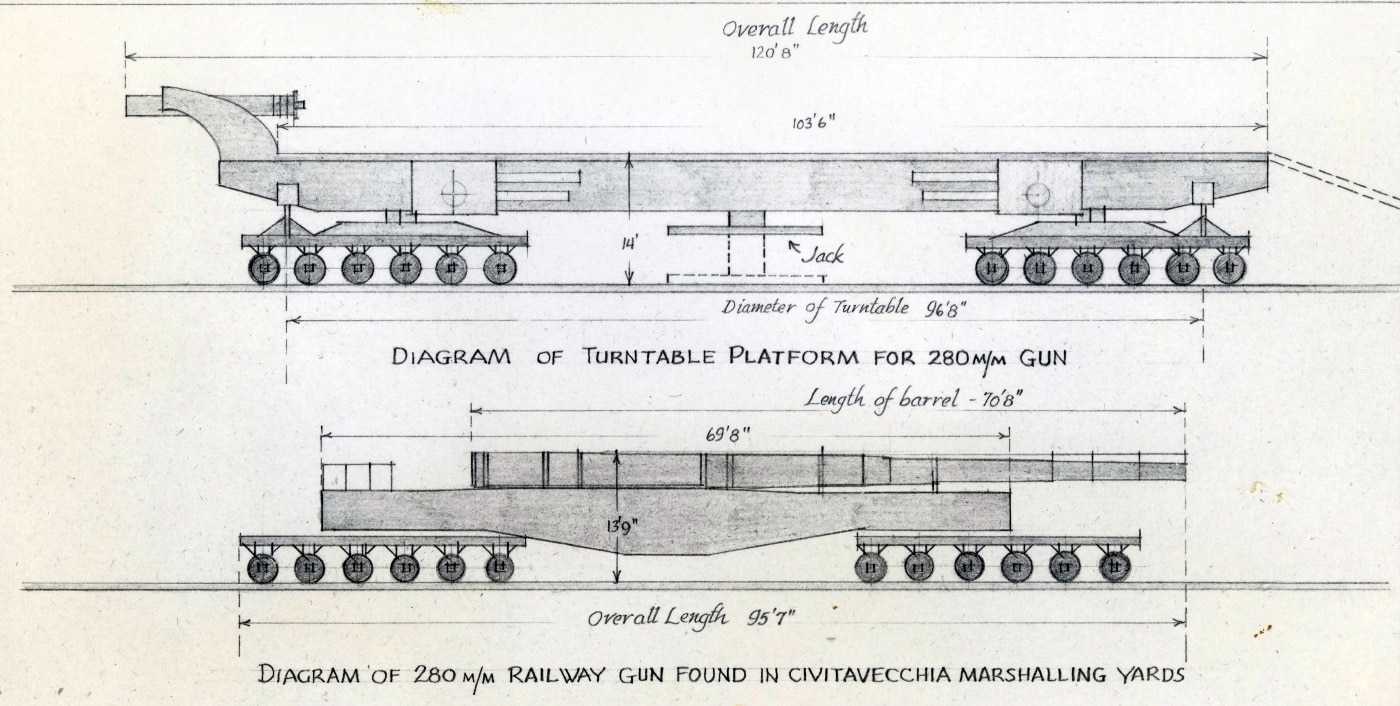
Shown here is a United States Army diagram of a German Krupp K5 based on the capture of the gun named “Robert” in Italy. Image: NARA
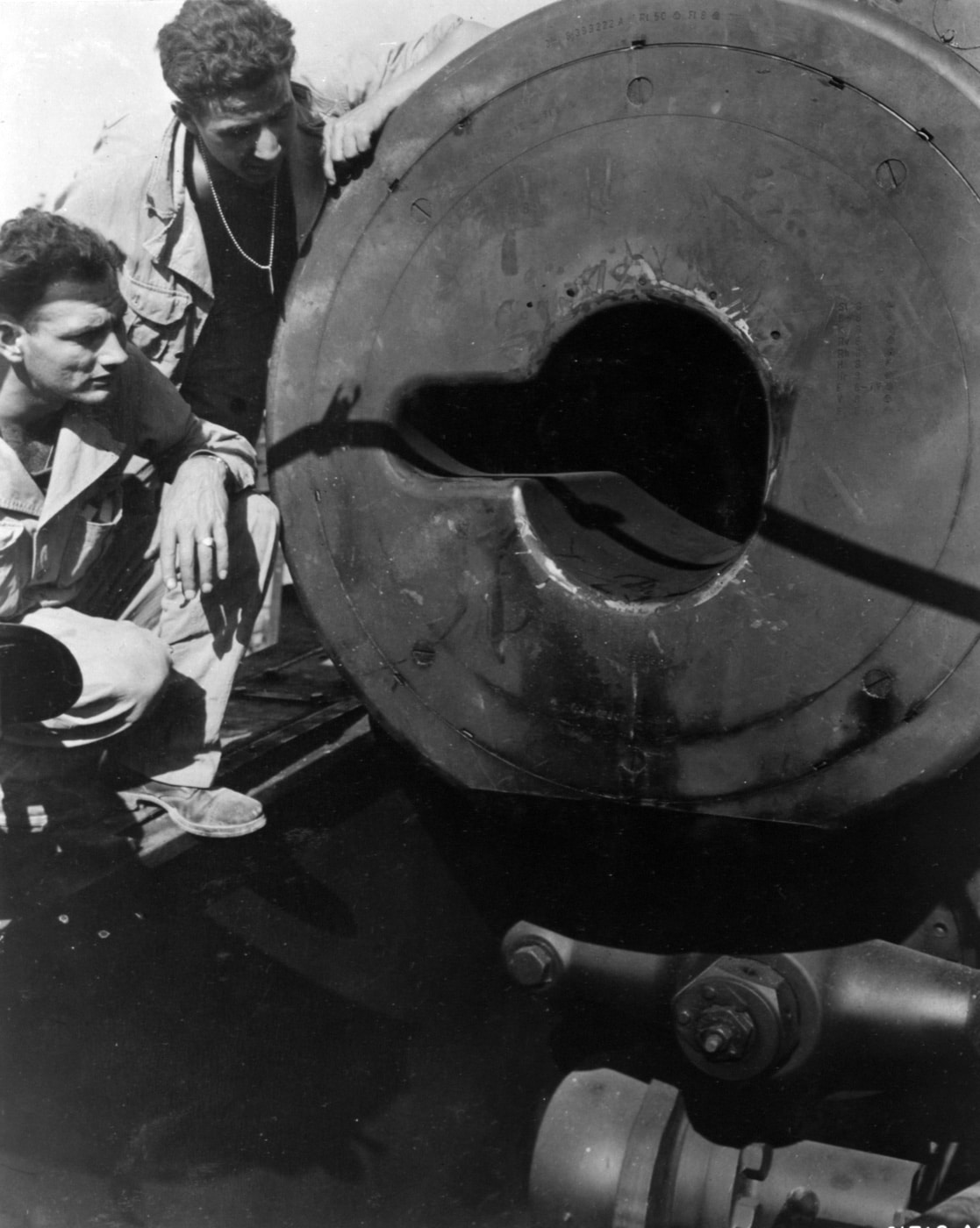
Anzio Annie’s gaping breech is examined by U.S. Army soldiers at Civitavecchia, Italy. Image: NARA
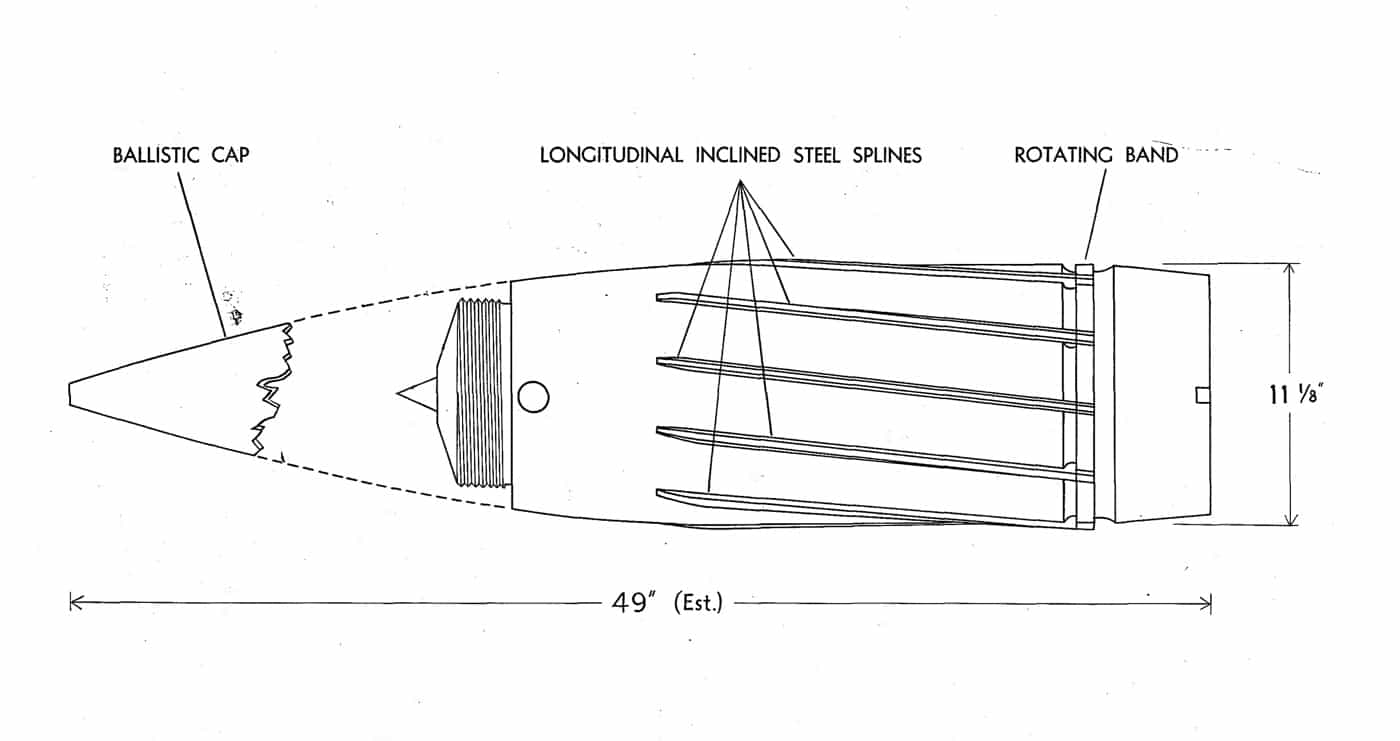
This is an U.S. Ordnance illustration of the 28cm rifled projectile used by the Krupp K5. Image: NARA
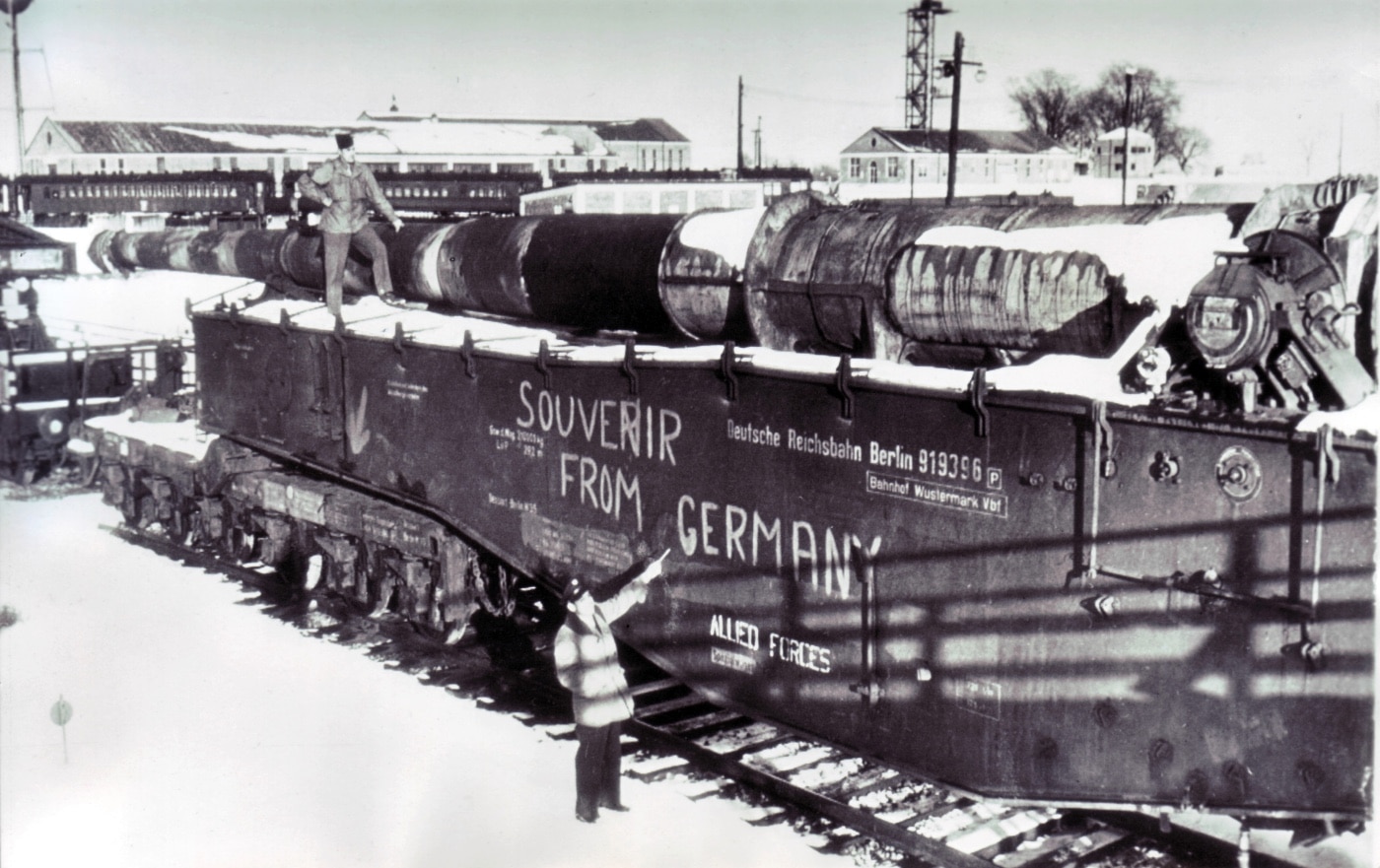
The captured Krupp K5 named Leopold at the Aberdeen Proving Ground. Image: NARA




